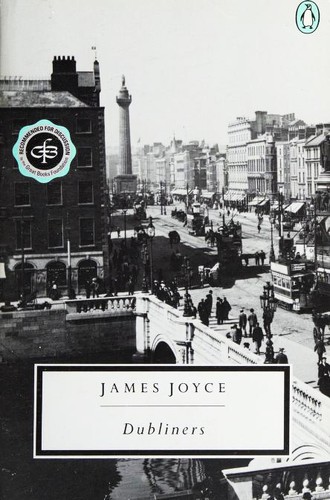Paperback, 317 pages
English language
Published Dec. 8, 1993 by Penguin Books.

Paperback, 317 pages
English language
Published Dec. 8, 1993 by Penguin Books.
'When you think that Dublin has been a capital for thousands of years,' James Joyce once wrote his brother, 'that it is the 'second' city of the British Empire . . . that it is nearly three times as big as Venice, it seems strange that no artist has given it to the world.'
In Dubliners, completed when Joyce was only twenty-five, we are given a definitive group portrait. It is a book, as Terence Brown writes in his stimulating Introduction, 'rooted in an intensely accurate apprehension of the detail of Dublin life.' And yet, beyond its brilliant and almost brute realism, it is also a book full of enigmas, ambiguities, and symbolic resonance. Dubliners remains a work of art that, Brown's words, 'compels attention by the power of its unique vision of the world, its controlling sense of truths experience as its author discerned them in a defeated, colonial …
'When you think that Dublin has been a capital for thousands of years,' James Joyce once wrote his brother, 'that it is the 'second' city of the British Empire . . . that it is nearly three times as big as Venice, it seems strange that no artist has given it to the world.'
In Dubliners, completed when Joyce was only twenty-five, we are given a definitive group portrait. It is a book, as Terence Brown writes in his stimulating Introduction, 'rooted in an intensely accurate apprehension of the detail of Dublin life.' And yet, beyond its brilliant and almost brute realism, it is also a book full of enigmas, ambiguities, and symbolic resonance. Dubliners remains a work of art that, Brown's words, 'compels attention by the power of its unique vision of the world, its controlling sense of truths experience as its author discerned them in a defeated, colonial city.' (back cover)